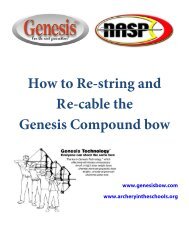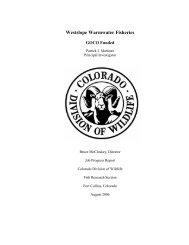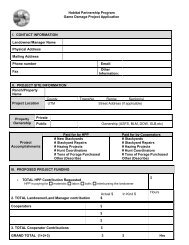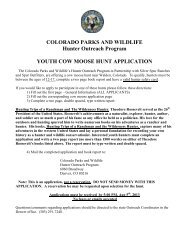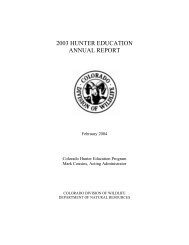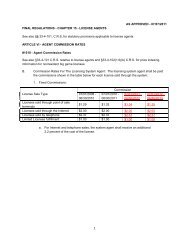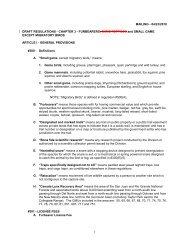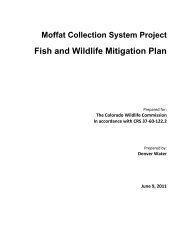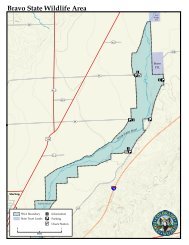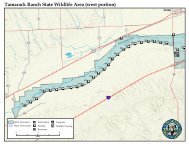Prewitt Reservoir - Colorado Division of Wildlife
Prewitt Reservoir - Colorado Division of Wildlife
Prewitt Reservoir - Colorado Division of Wildlife
Create successful ePaper yourself
Turn your PDF publications into a flip-book with our unique Google optimized e-Paper software.
Volume (acre-feet)<br />
<strong>Prewitt</strong> <strong>Reservoir</strong><br />
FISH SURVEY AND MANAGEMENT DATA<br />
Mandi Brandt - Aquatic Biologist (Brush)<br />
mandi.brandt@state.co.us / 970-842-6330<br />
About the <strong>Reservoir</strong>...<br />
Constructed in 1908, <strong>Prewitt</strong> <strong>Reservoir</strong> is 105 years old. The reservoir has a maximum depth <strong>of</strong> 25<br />
feet and a mean depth <strong>of</strong> 11 feet. With exception <strong>of</strong> the willows, cottonwoods, and smartweed that<br />
grow near the inlet, the reservoir virtually devoid <strong>of</strong> structure.<br />
The reservoir is managed as a recharge impoundment, meaning outflows to the South Platte River<br />
are strategically timed to <strong>of</strong>fset reduced river flows caused by irrigation and aquifer pumping.<br />
During a typical year, <strong>Prewitt</strong> <strong>Reservoir</strong> is drawn down to approximately one-half <strong>of</strong> its maximum<br />
volume (Figure 1).<br />
While this water<br />
35,000<br />
30,000<br />
25,000<br />
management regime<br />
supplies much<br />
needed water to the<br />
South Platte River,<br />
it has negative impacts<br />
on the reser-<br />
20,000<br />
voir’s fishery. As<br />
15,000<br />
water is released<br />
10,000<br />
5,000<br />
from the reservoir,<br />
some fish get<br />
flushed into the<br />
river. Remaining<br />
0<br />
fish are subject to<br />
Mar Apr May Jun Jul Aug Sep Oct Nov Dec Jan Feb water draw-down<br />
Month<br />
Figure 1. Water level fluctuation at <strong>Prewitt</strong> <strong>Reservoir</strong> during a typical year.<br />
The reservoir usually reaches full capacity (red dotted line) prior to the irrigation<br />
season, which begins in May. During the irrigation season (May-<br />
October), water is released from the reservoir to augment flows in the South<br />
Platte River, drawing the reservoir down to approximately one-half <strong>of</strong> its capacity.<br />
Refilling usually begins near the end <strong>of</strong> October, is suspended during<br />
the winter months (December-February) to protect the dam, and resumes<br />
again in the spring (March).<br />
which eliminates<br />
littoral habitat that<br />
young fish would<br />
normally use to escape<br />
predation. The<br />
risk <strong>of</strong> being consumed<br />
is heightened<br />
as the water level<br />
continues to drop<br />
and fish are concentrated<br />
into a successively<br />
smaller pool.<br />
Though it can be trying for young fish to survive in these conditions, <strong>Prewitt</strong>’s dead pool (6 feet<br />
deep) is substantial enough to support many <strong>of</strong> the older, larger fish until the reservoir refills.



